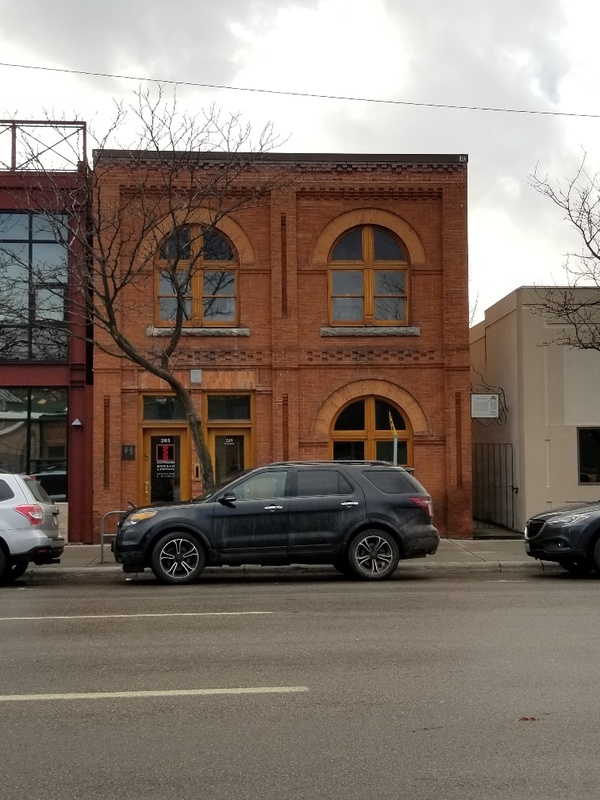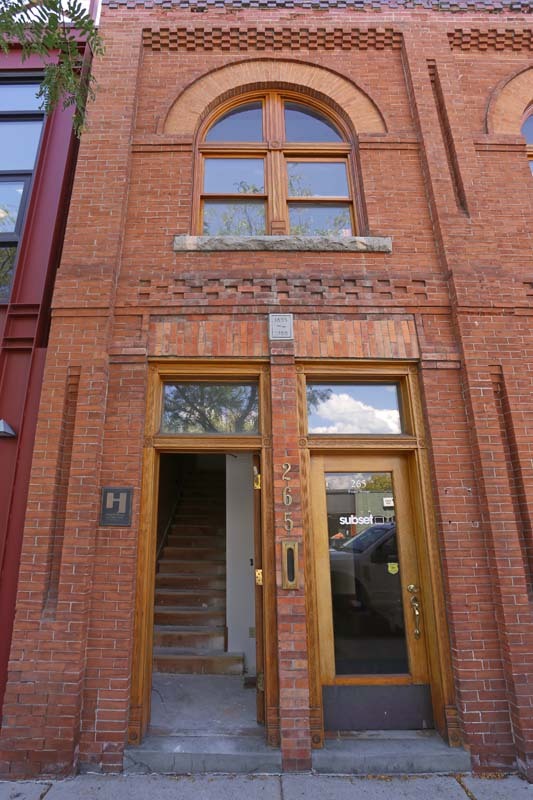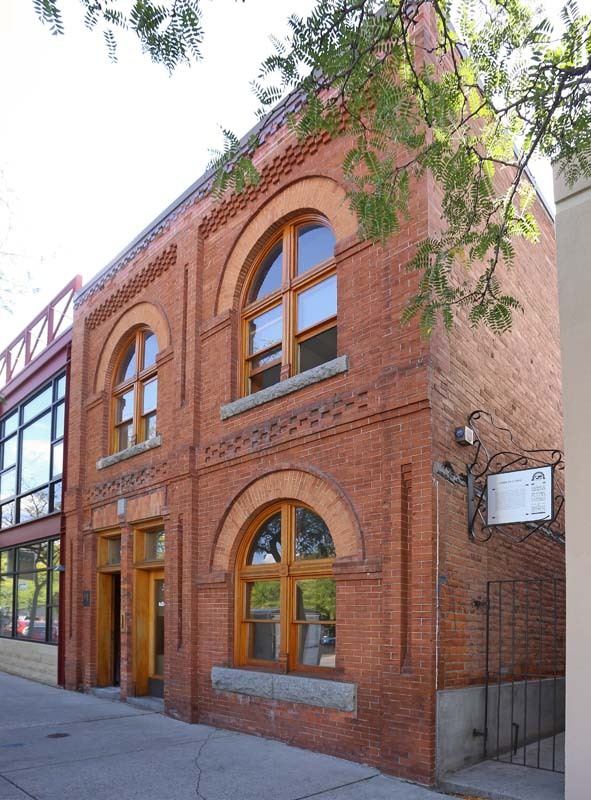
Built in 1893, this is an excellent example of vernacular adaptation of Romanesque architecture, with its arched windows, checkerboard banding, and rusticated granite sills. Today the building has been restored on its façade and east and west sides to the original appearance. Historically, the building is a reminder of the effect of the railroad on Missoula in earlier days. Mary Gleim built it as a “female boarding house,” a euphemism for brothel, in the heart of what then was the city’s red light district of honky tonks and hurdy gurdy houses. Such establishments—legal under city law—had appeared along West Front Street early on, but proliferated with the arrival of railroad construction crews in the 1880s. Gleim herself owned at least eight houses of prostitution in the 1890s and early twentieth century, and was a notorious figure who assaulted people and was given to noisy outbursts during her court appearances. She sold this building in 1903, and in 1916 city officials bowed to public pressure and closed the red light district. The building housed a series of billiards parlors over the next decades.
Images


